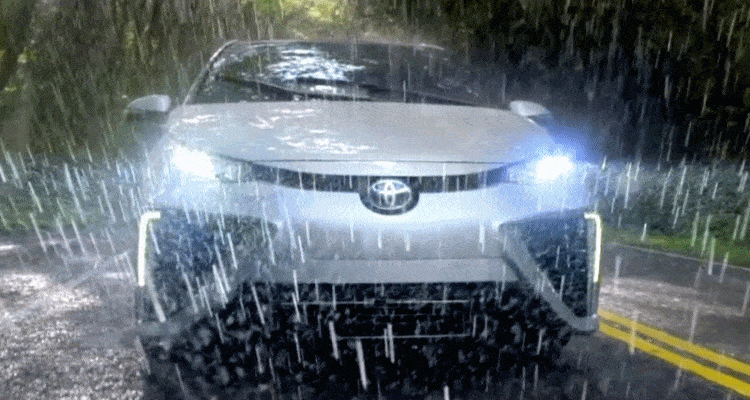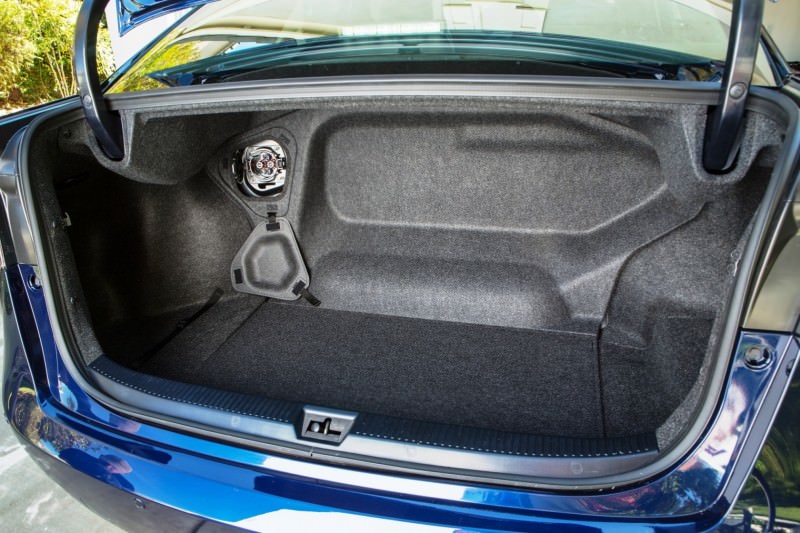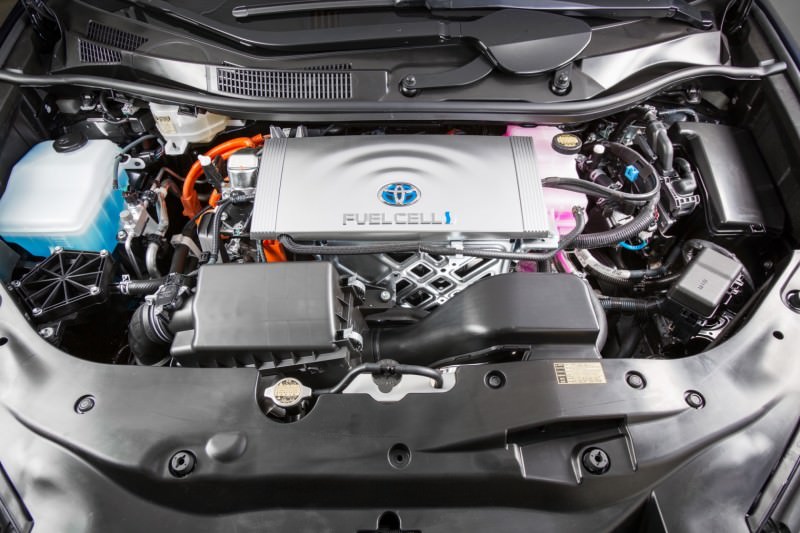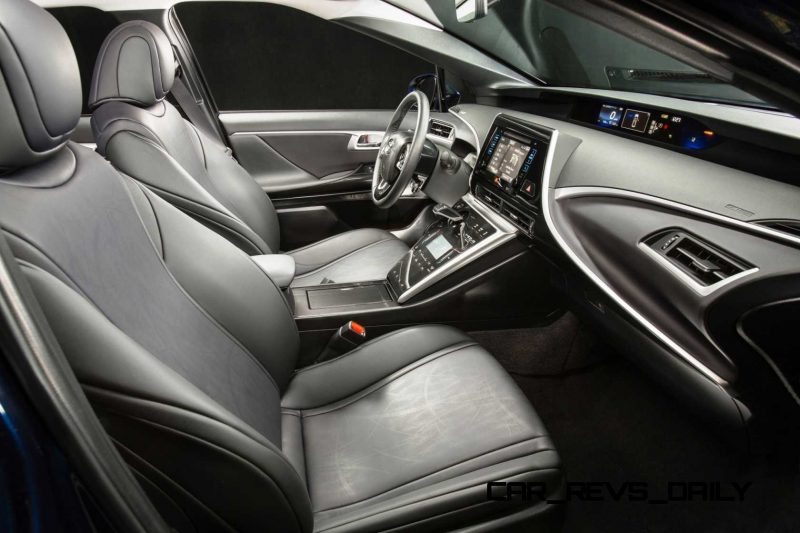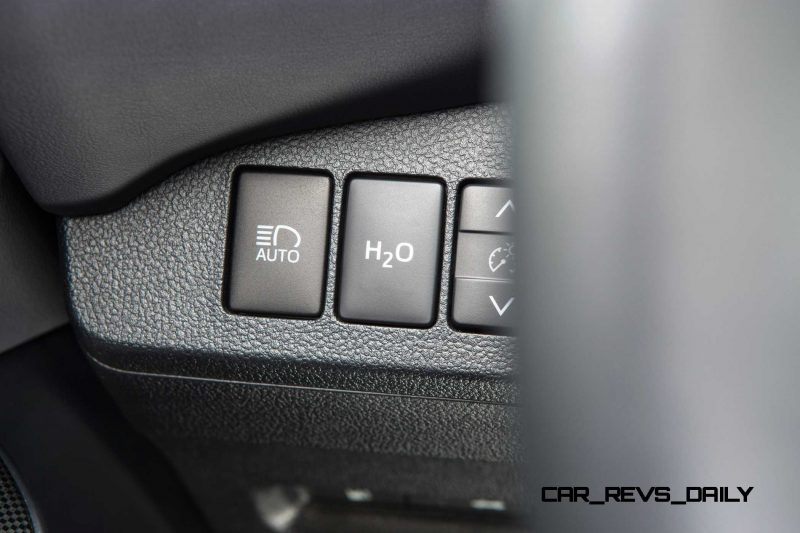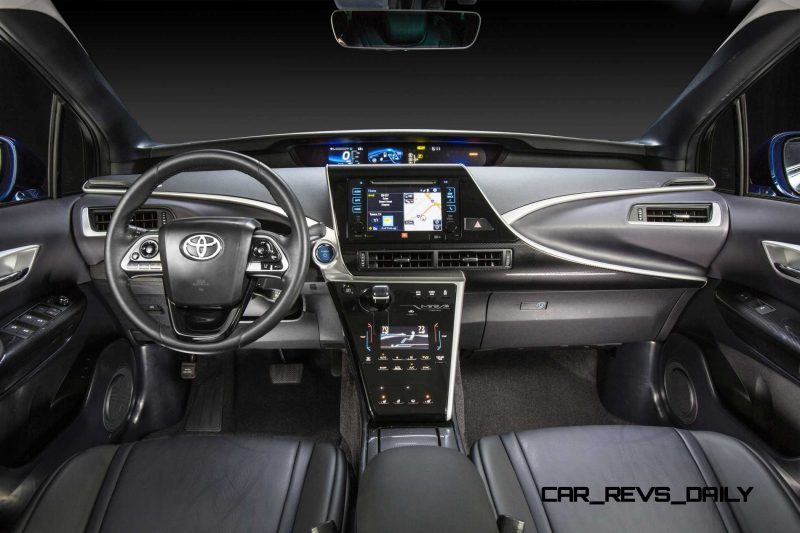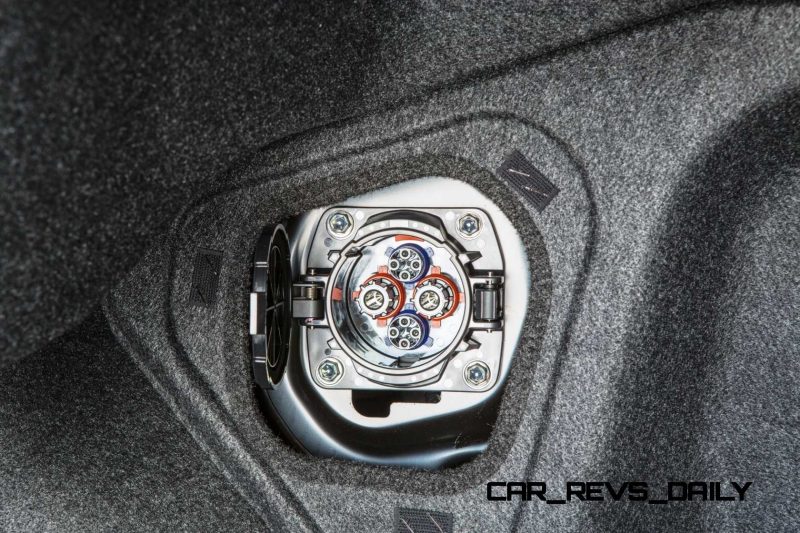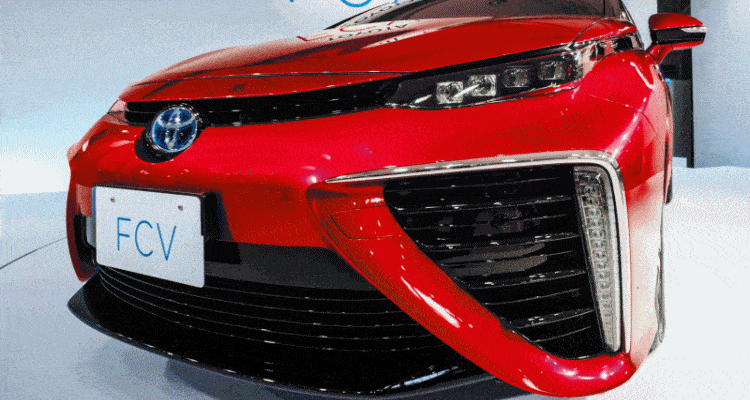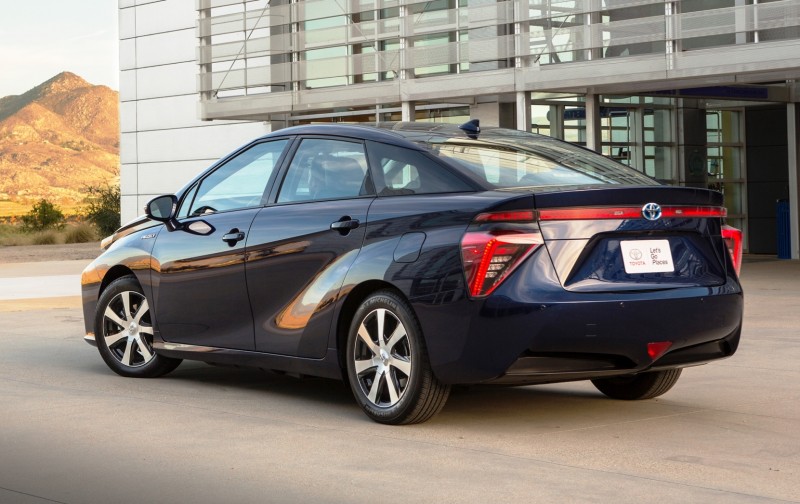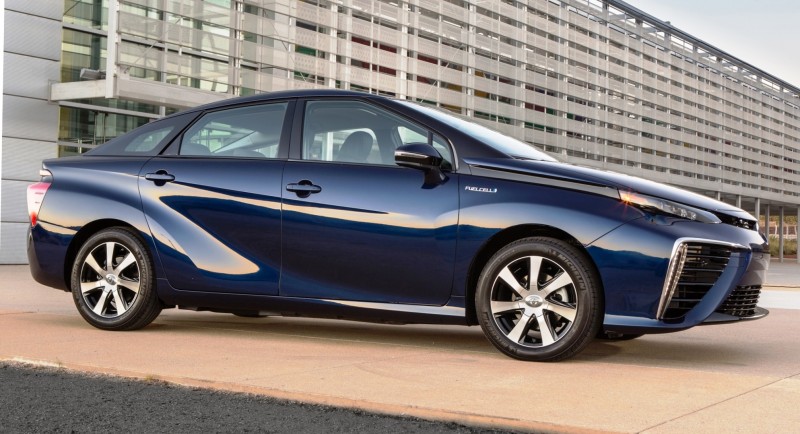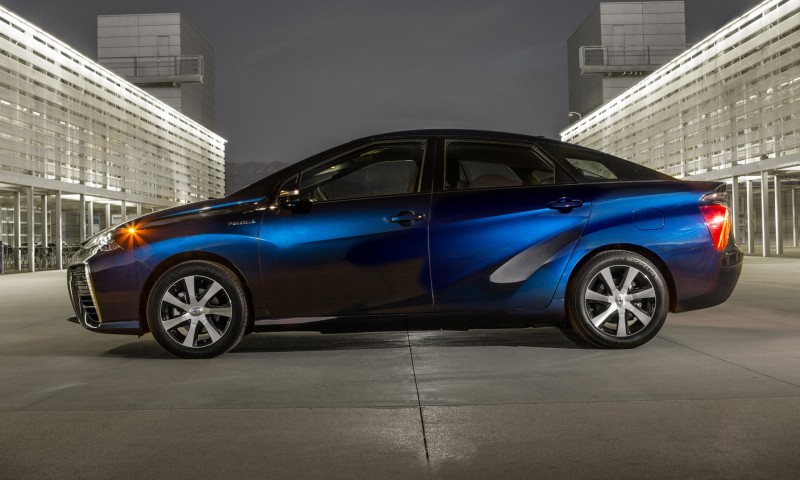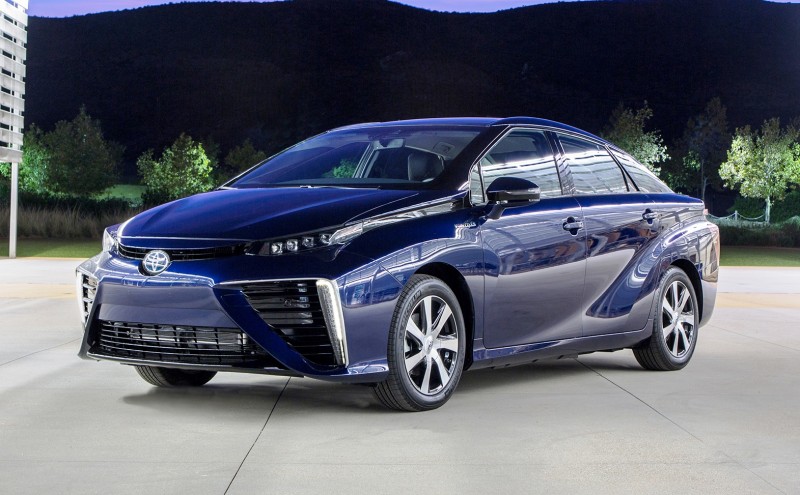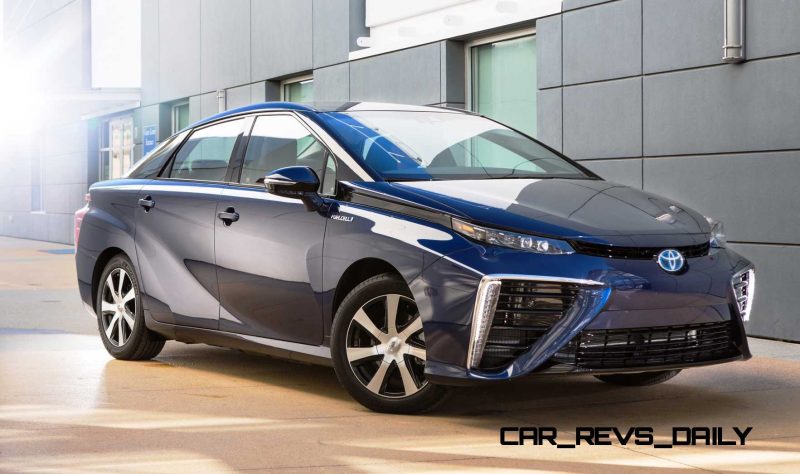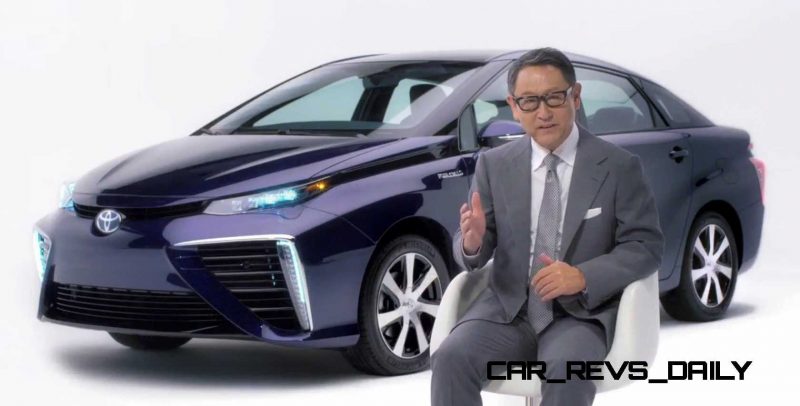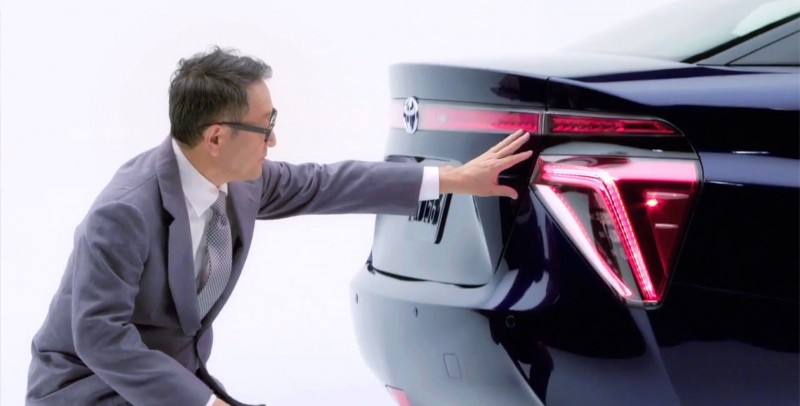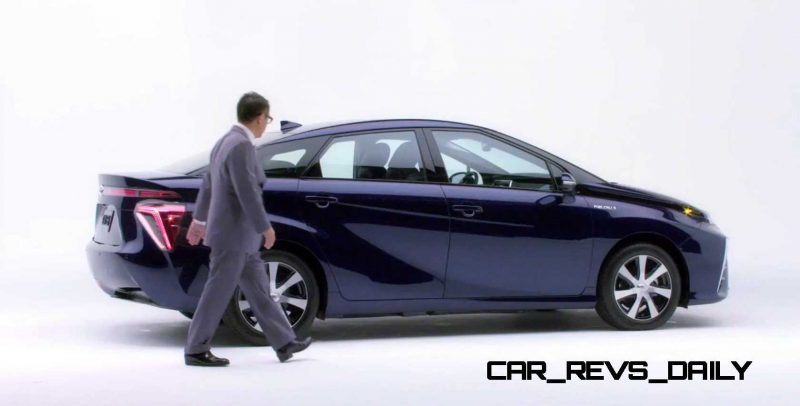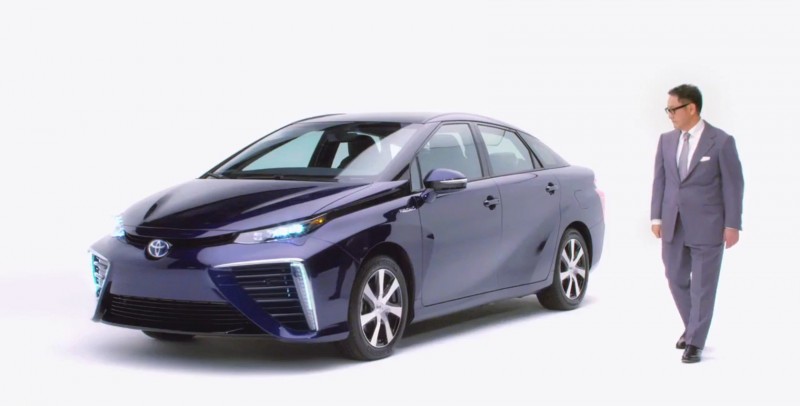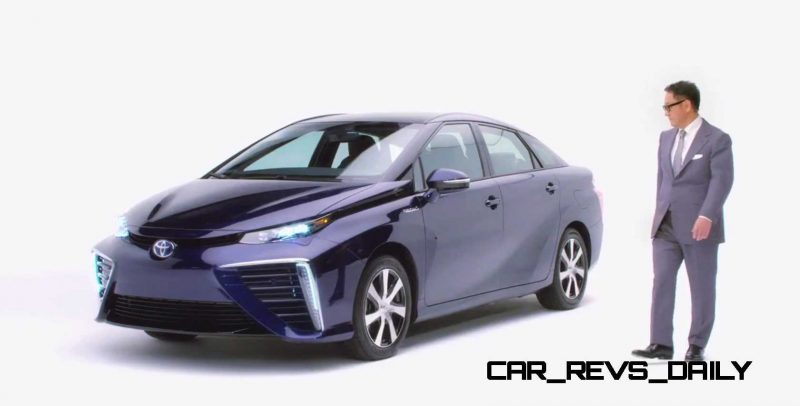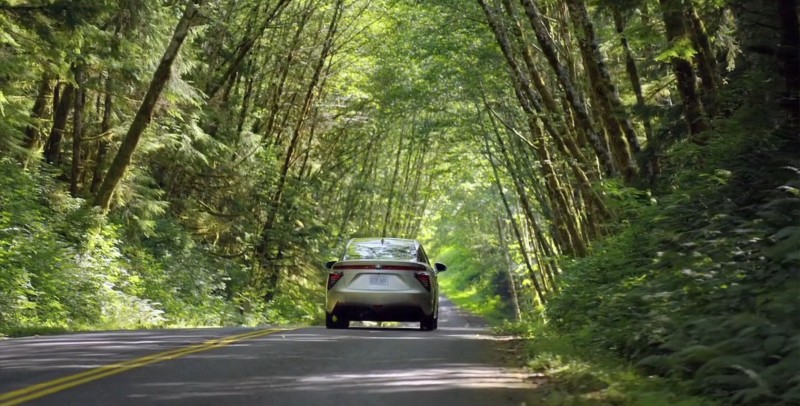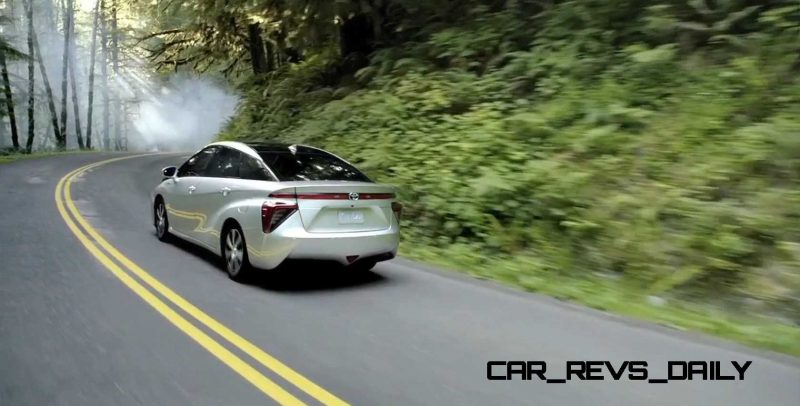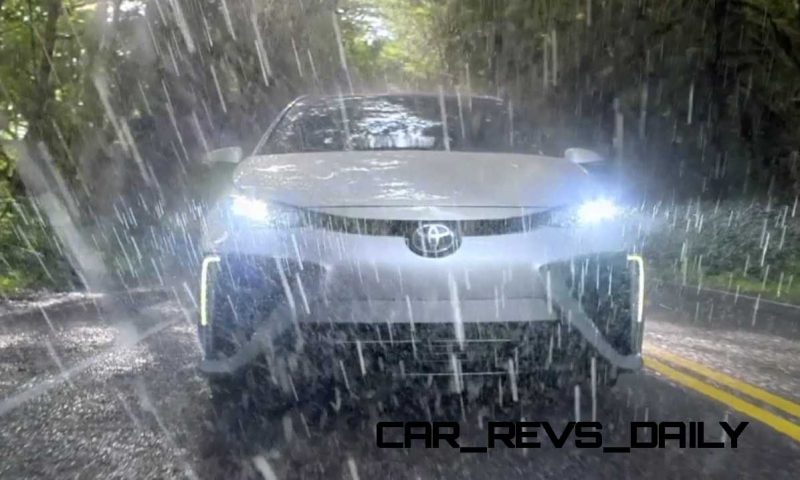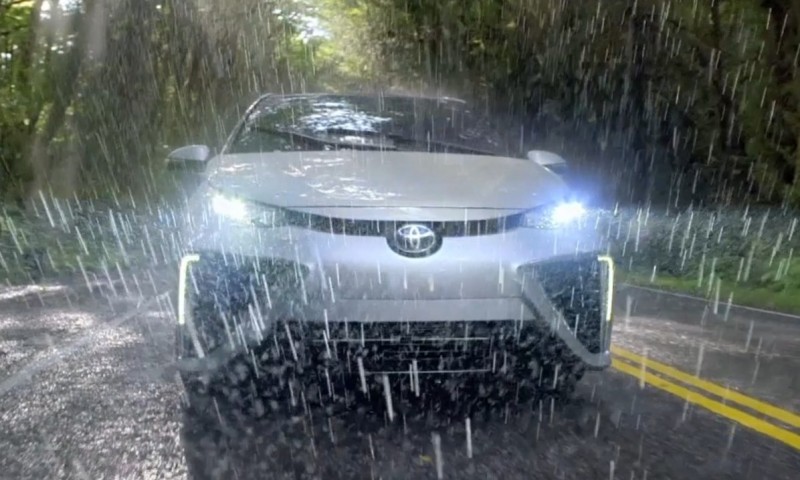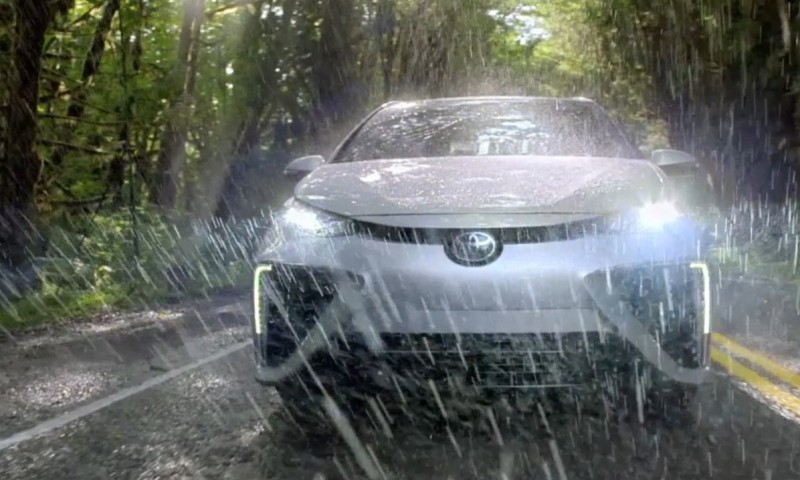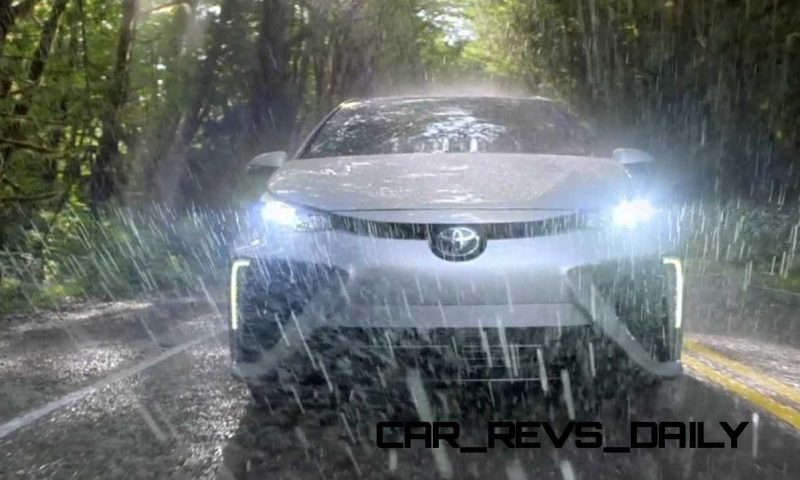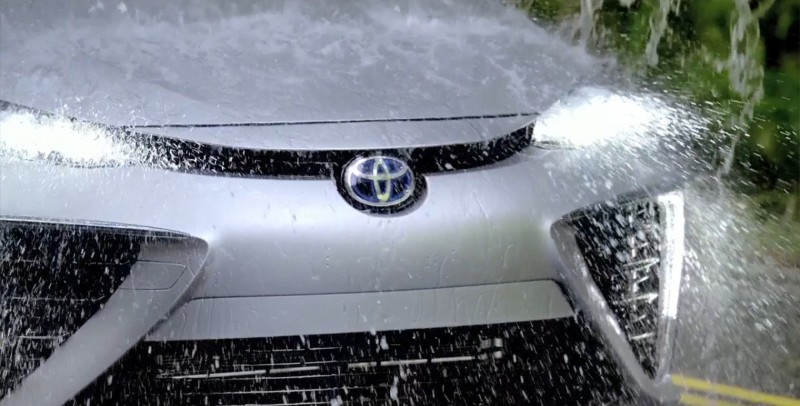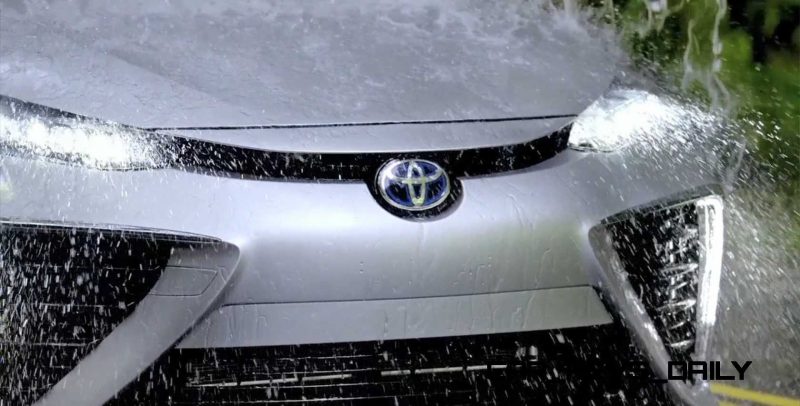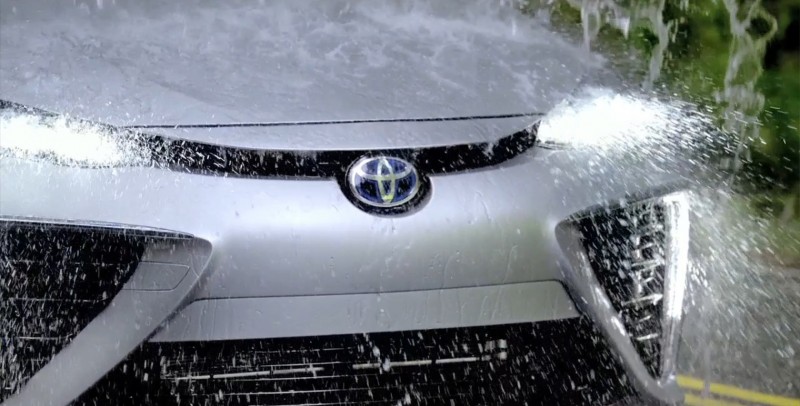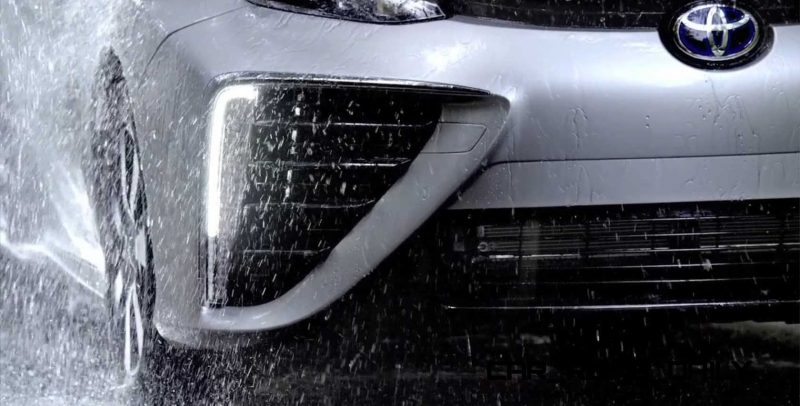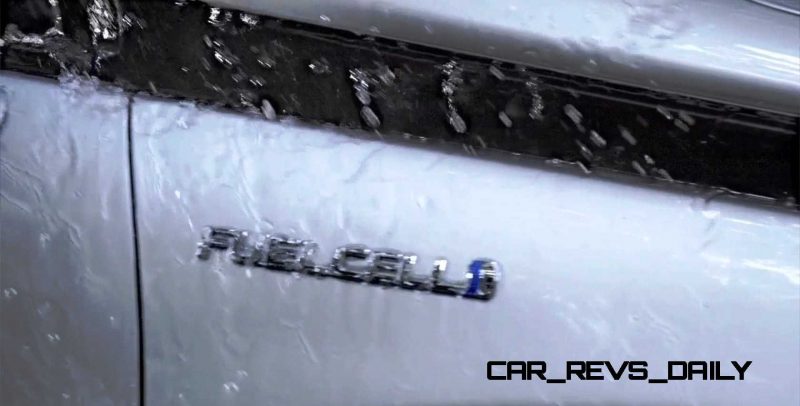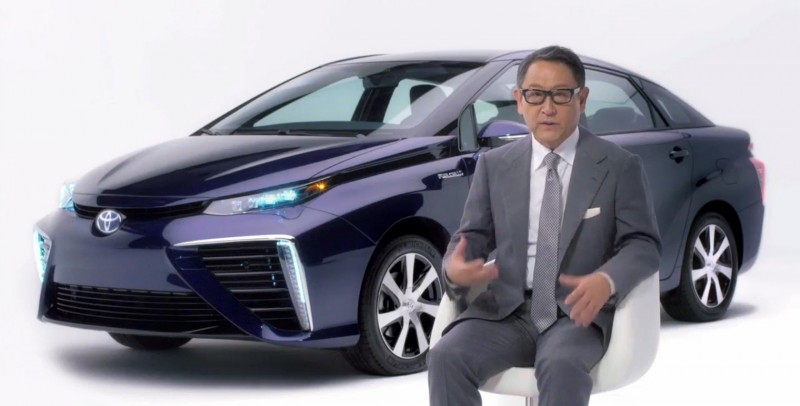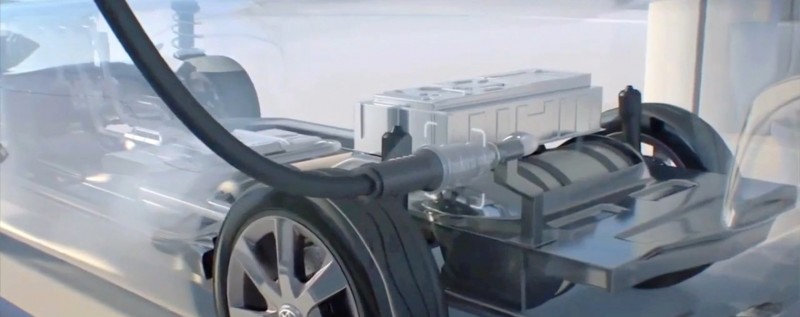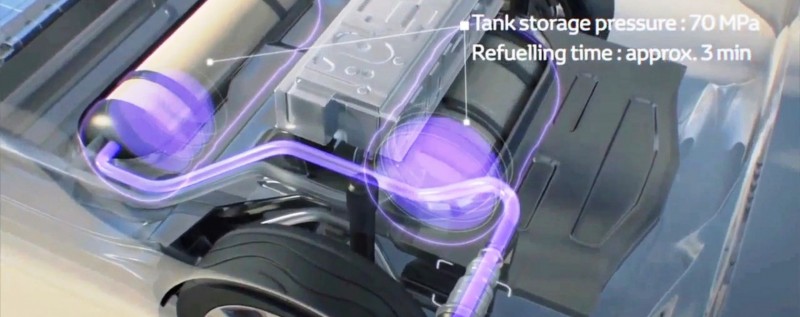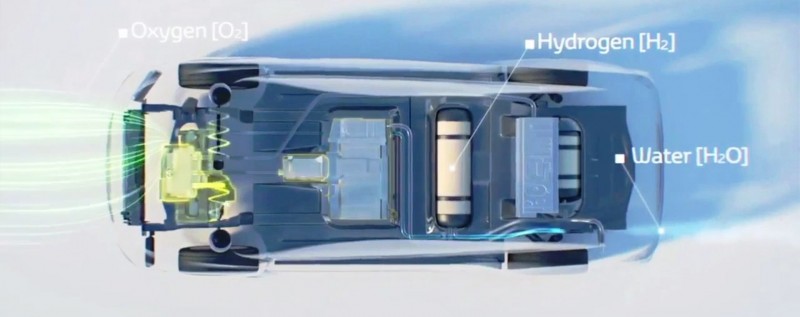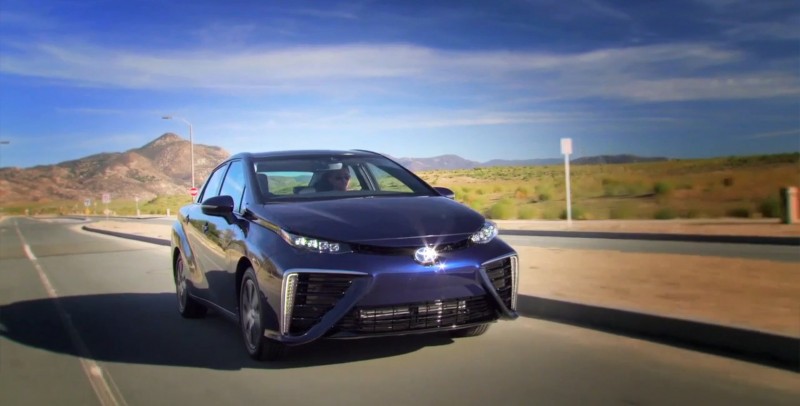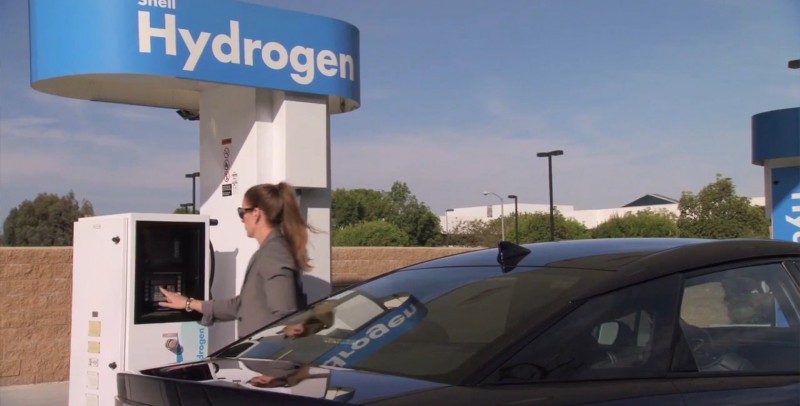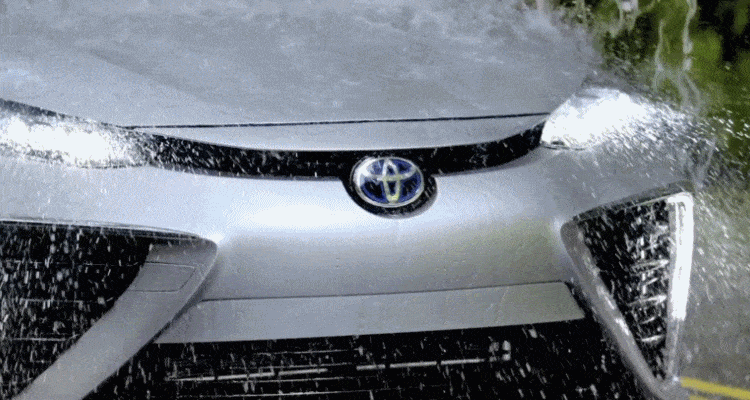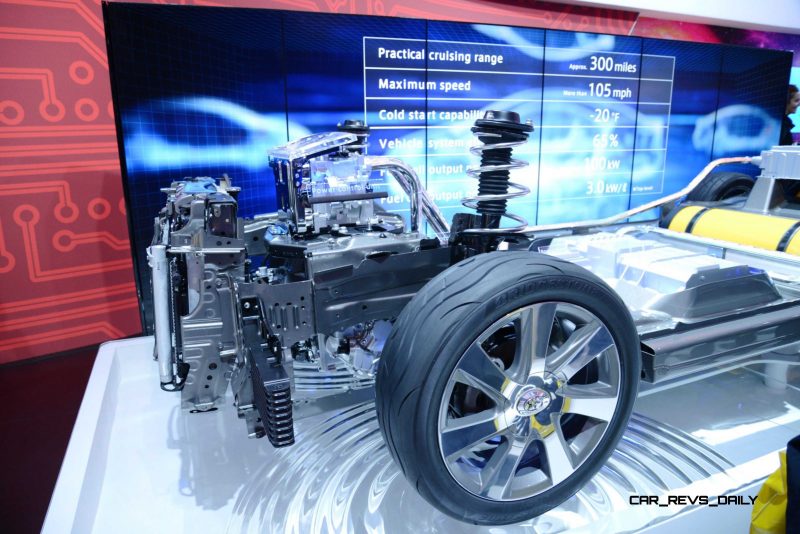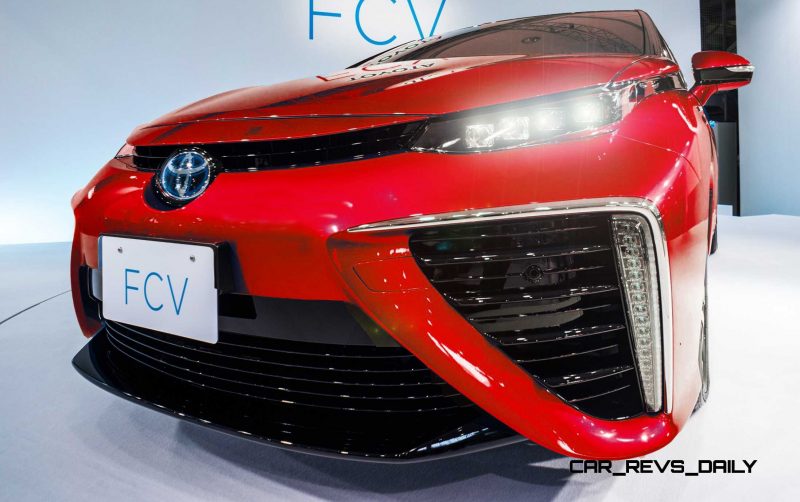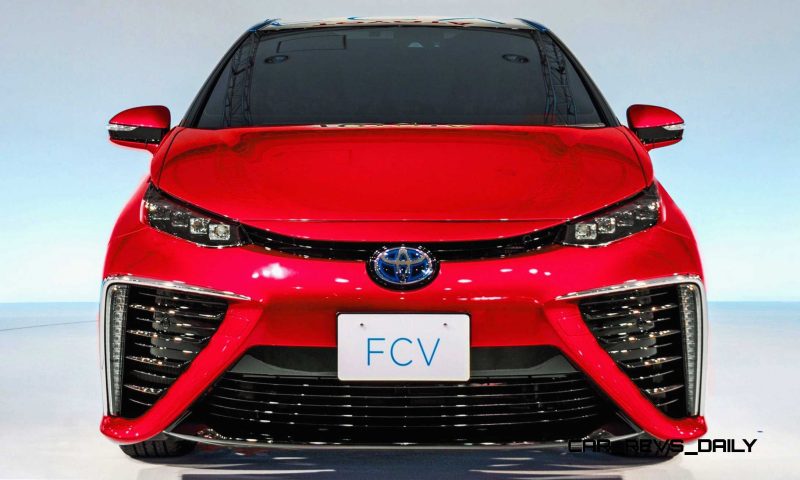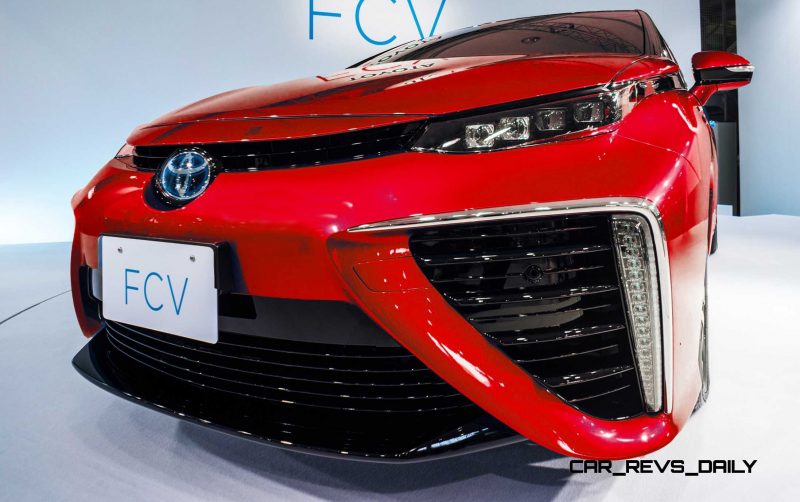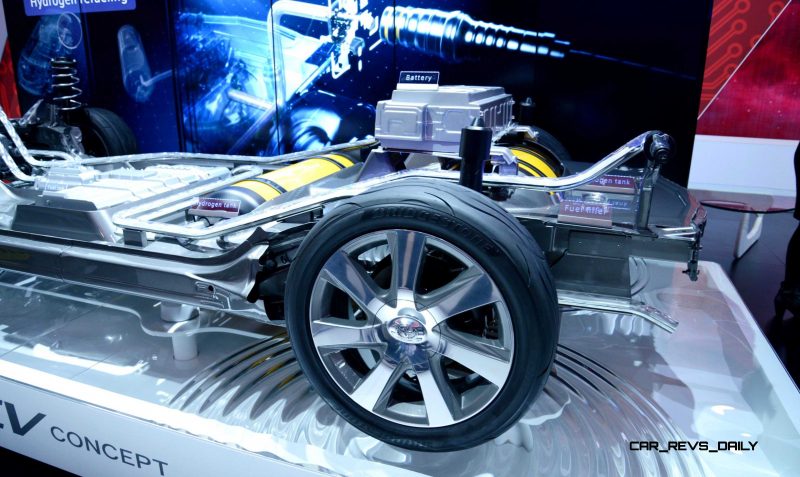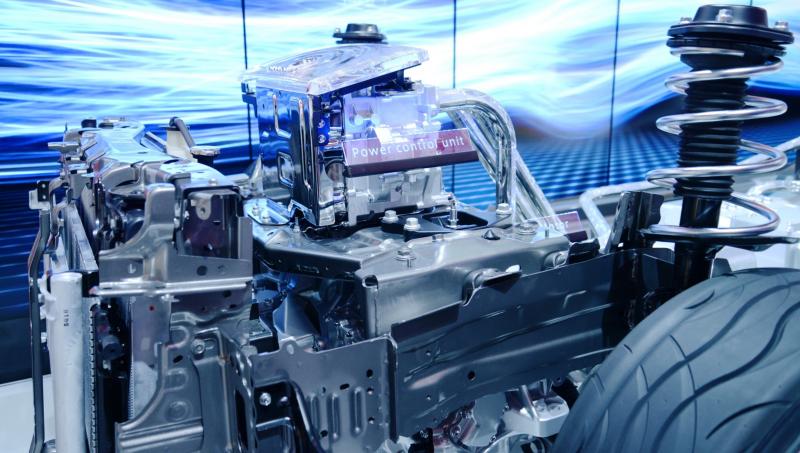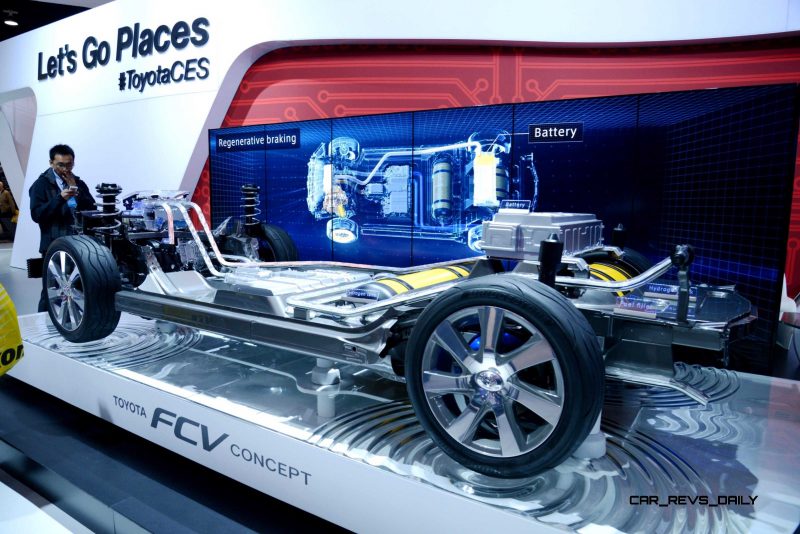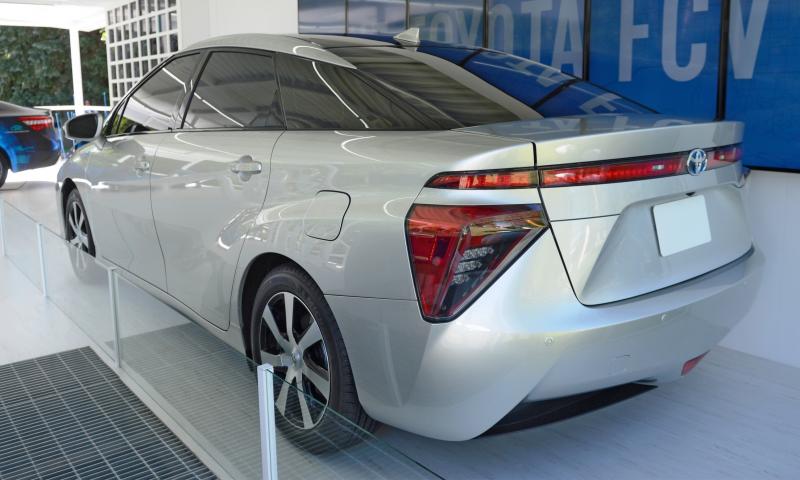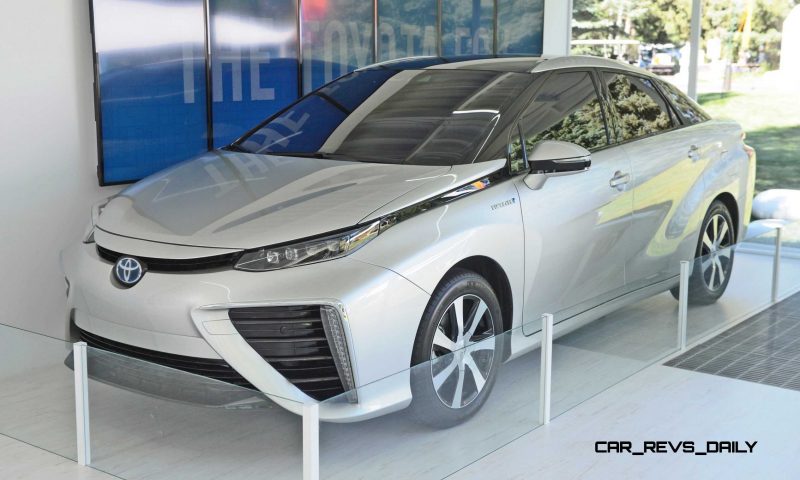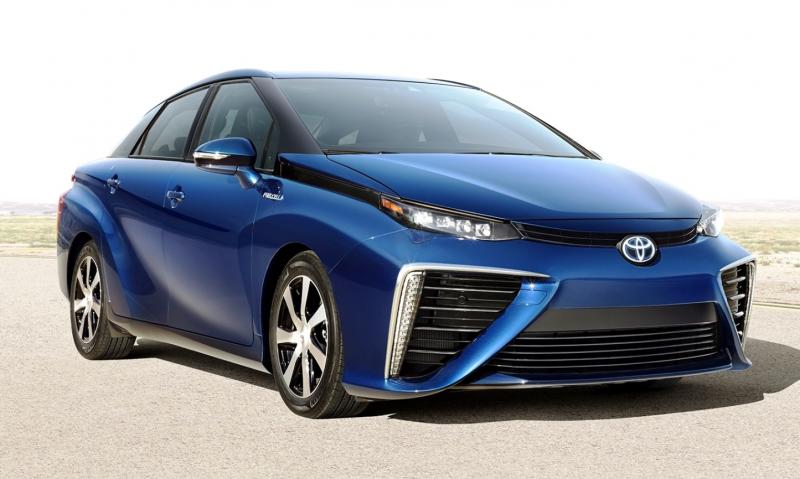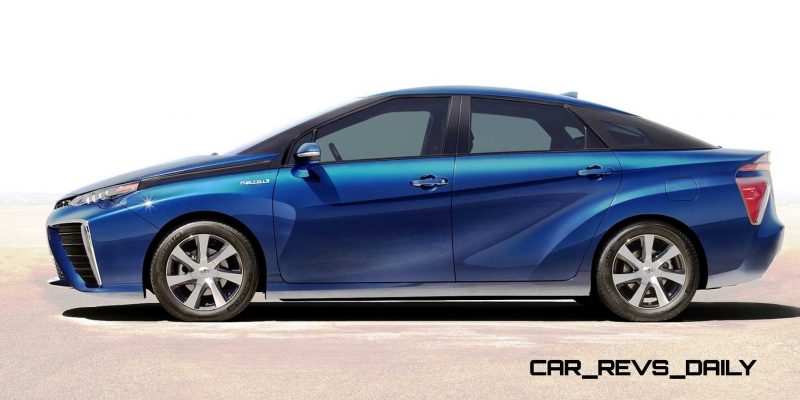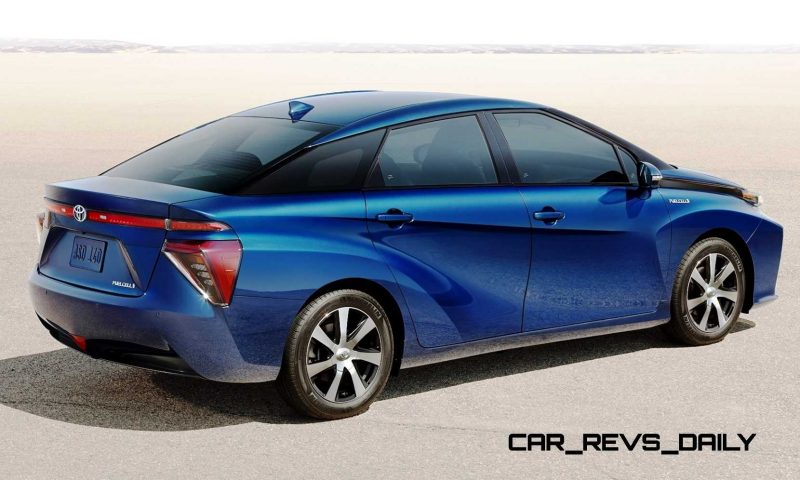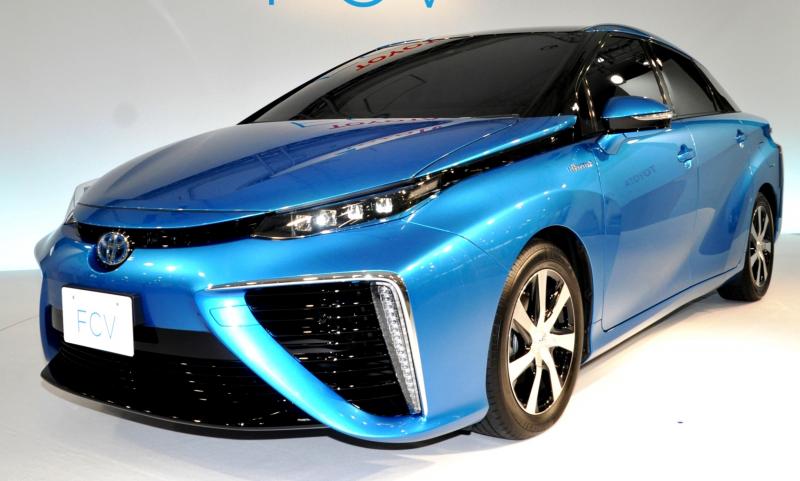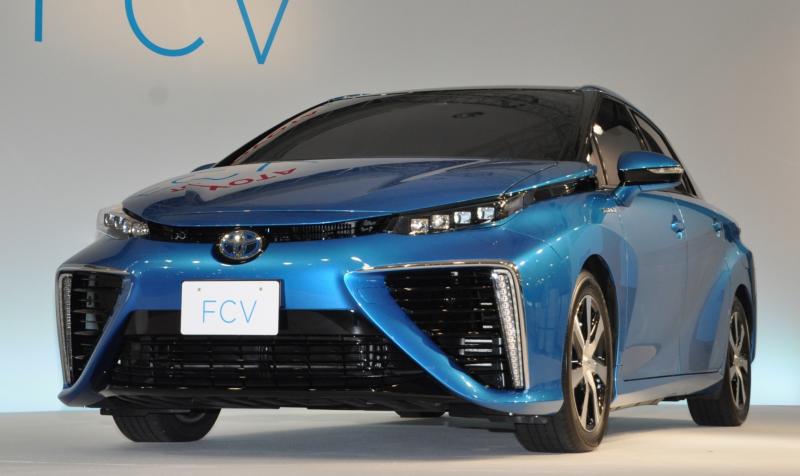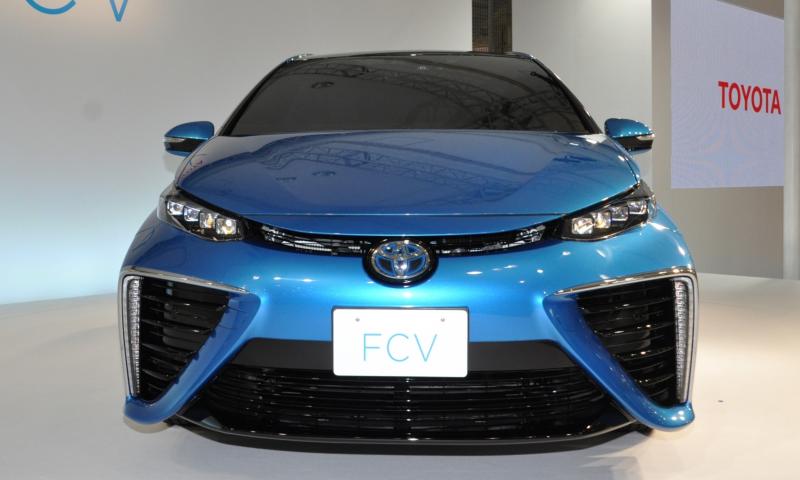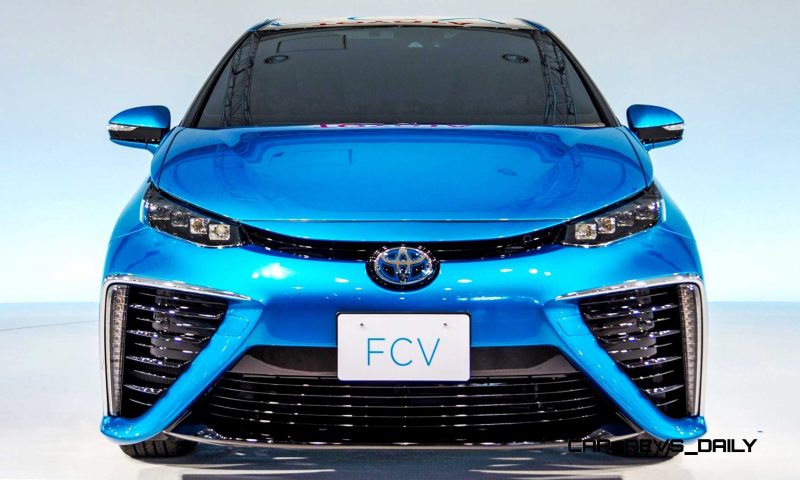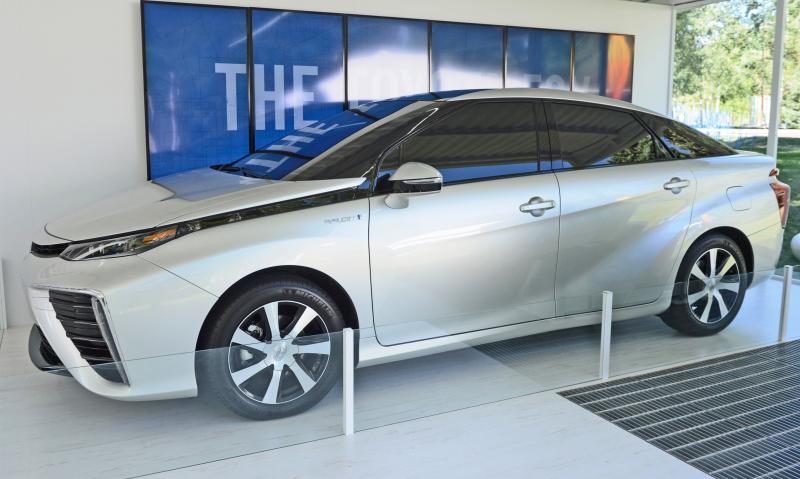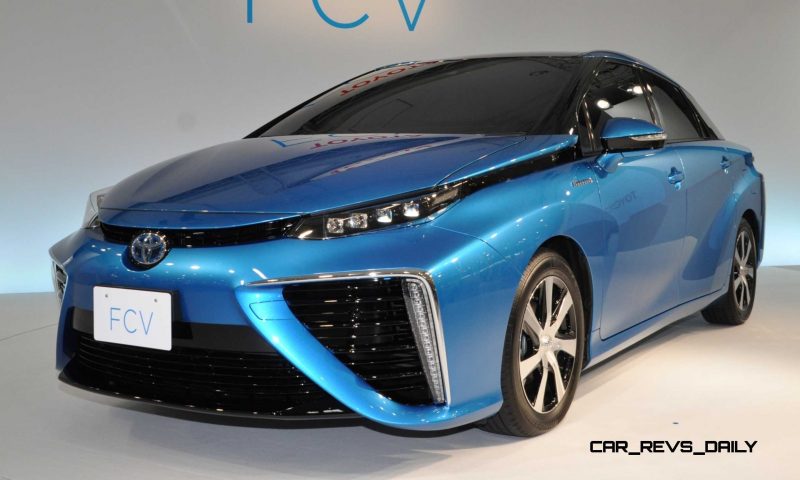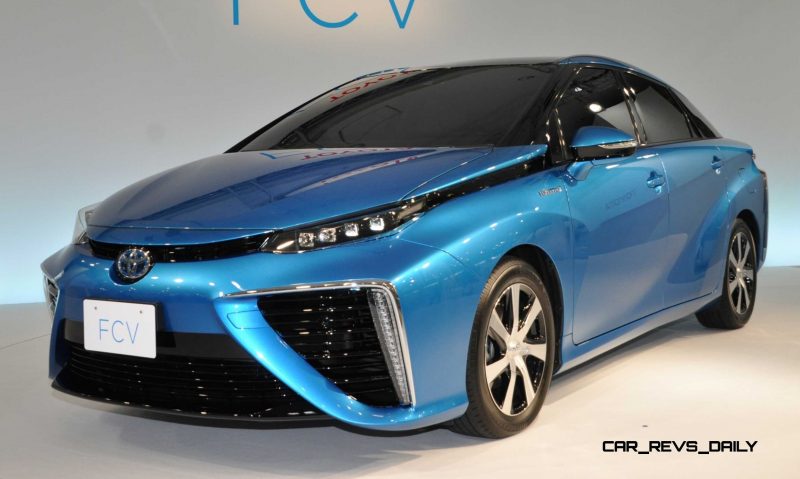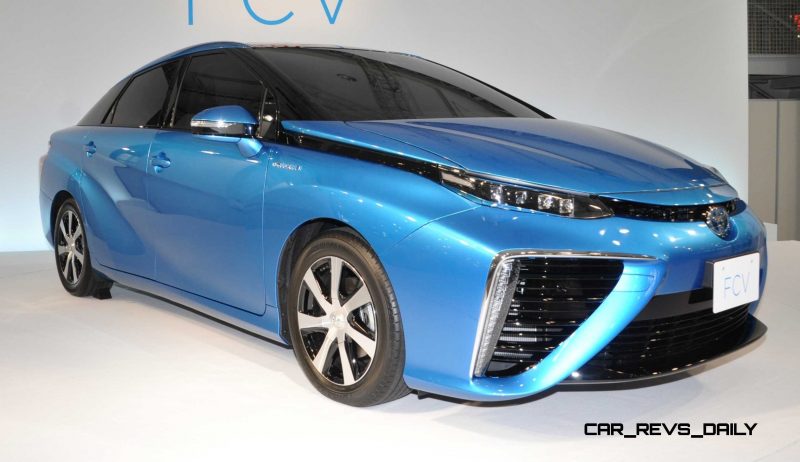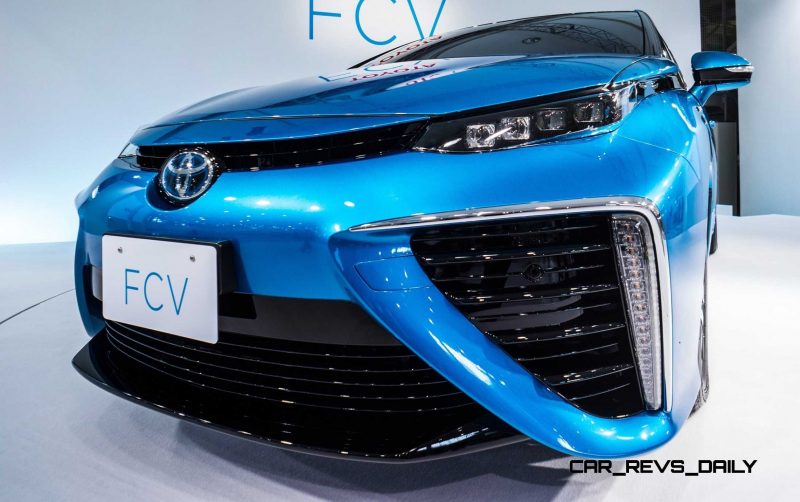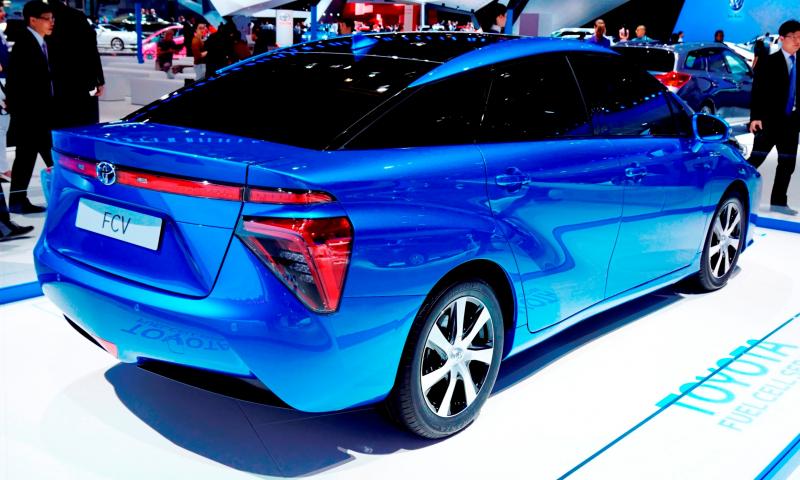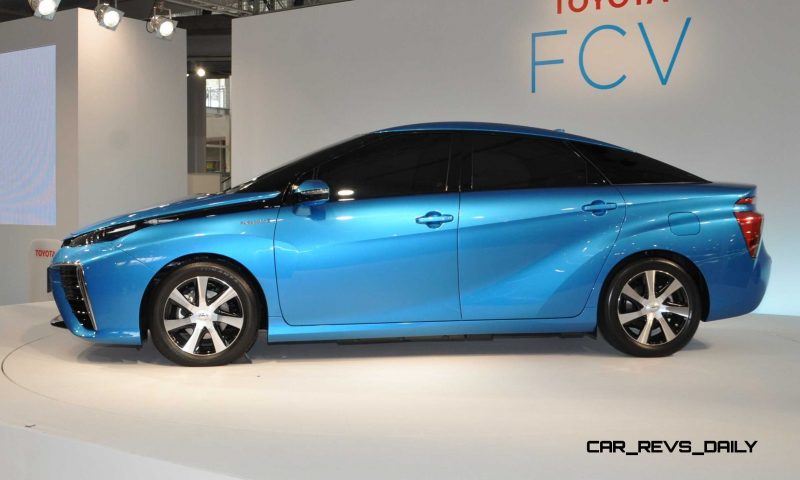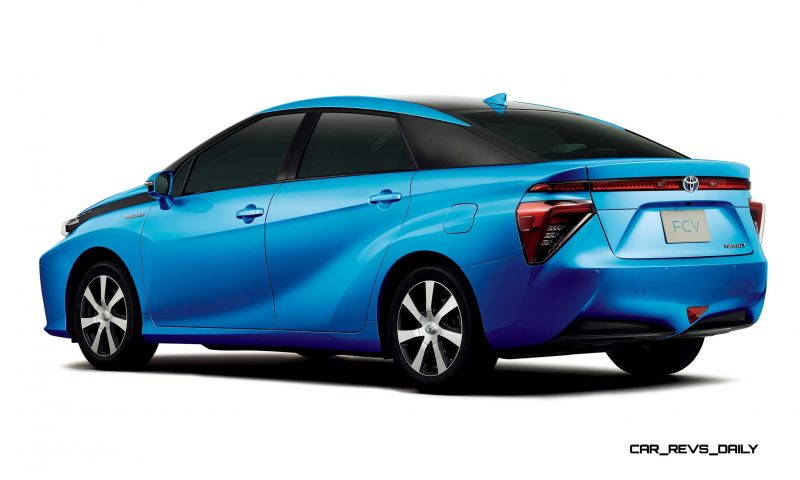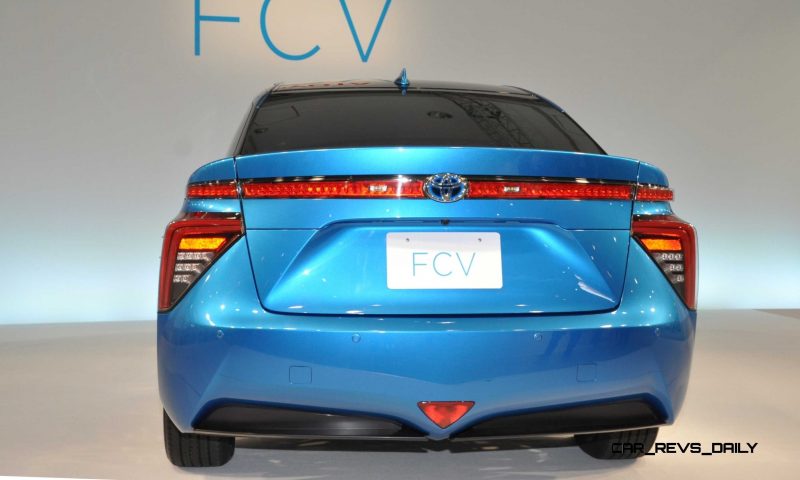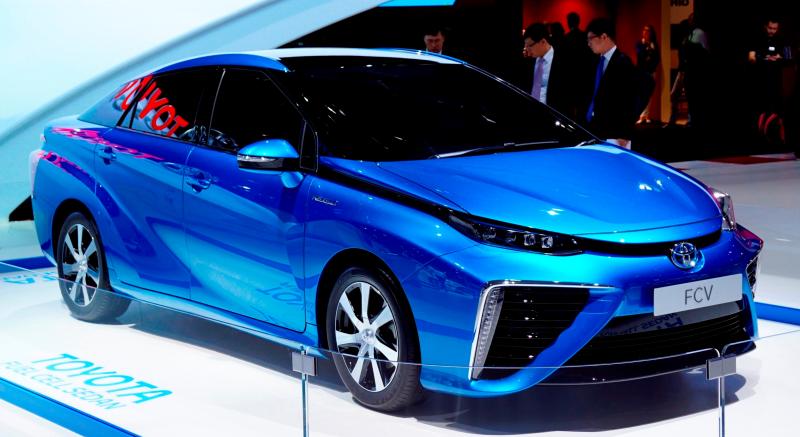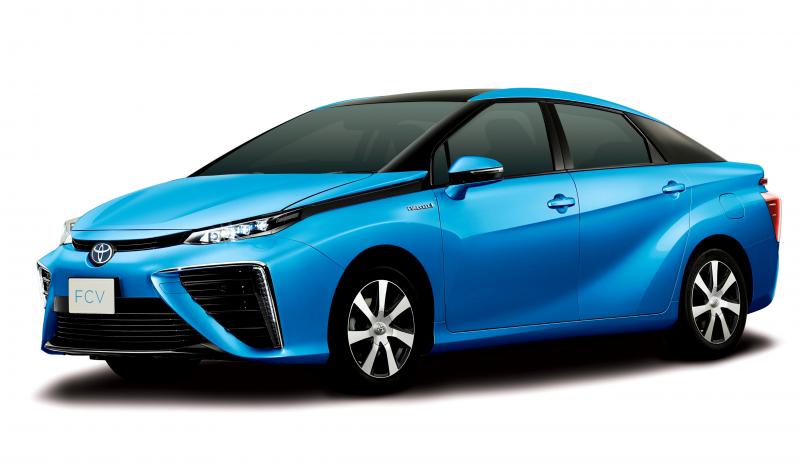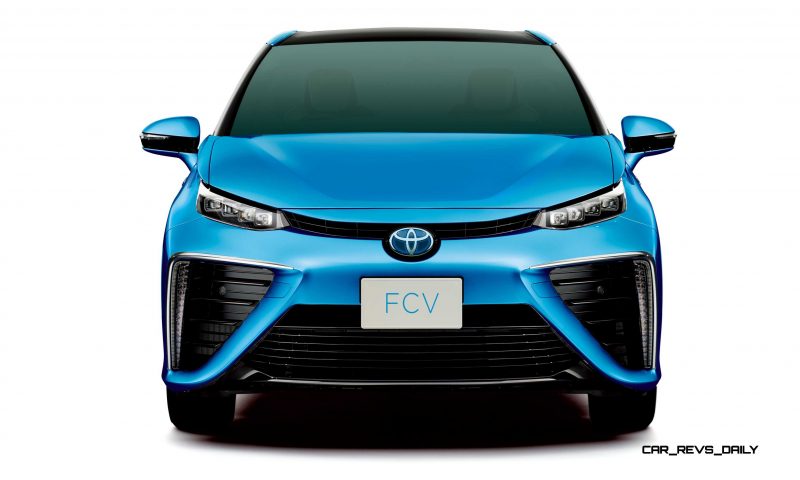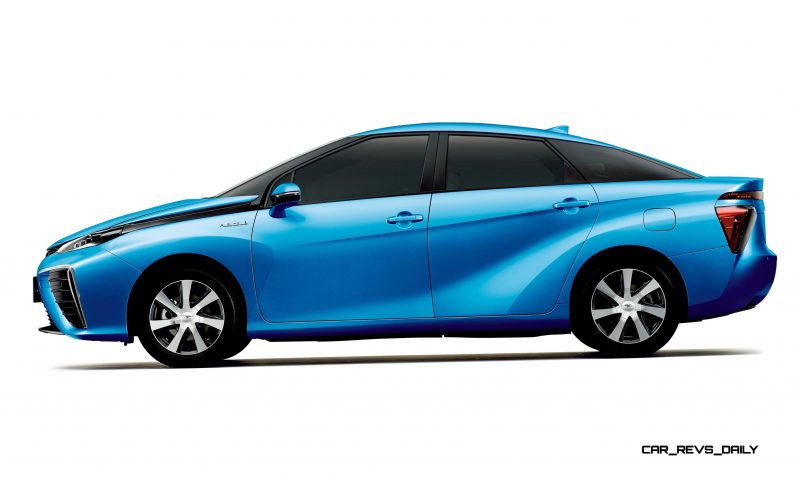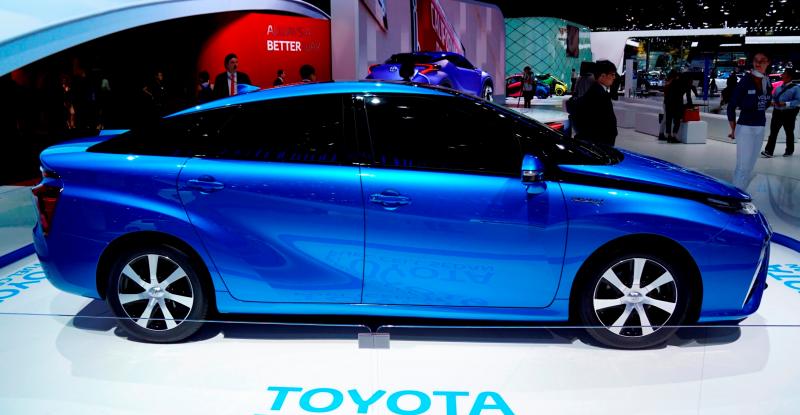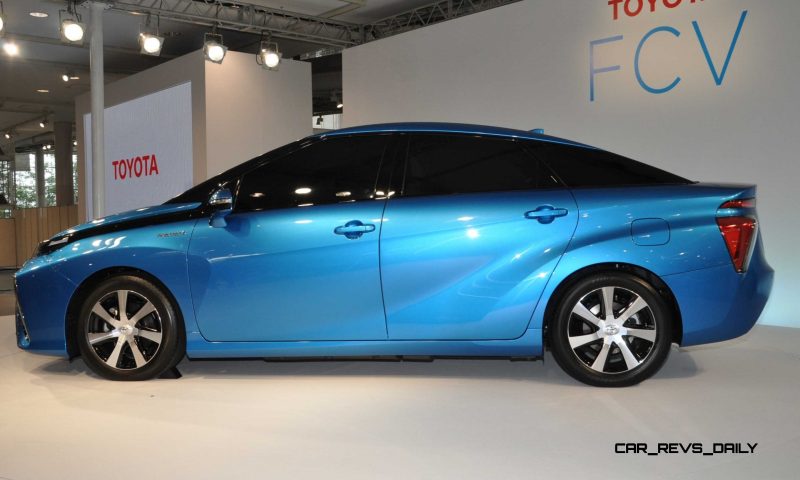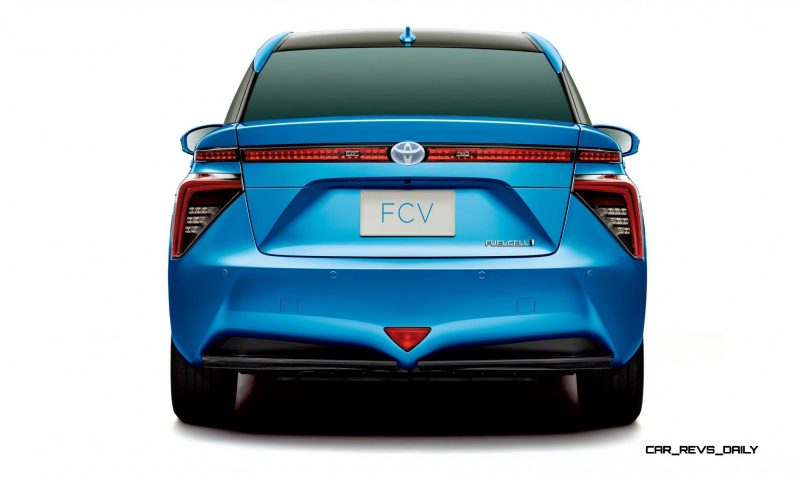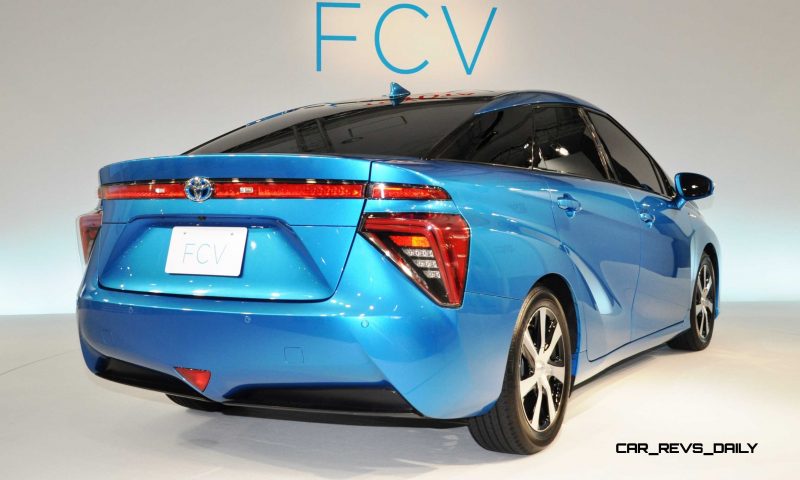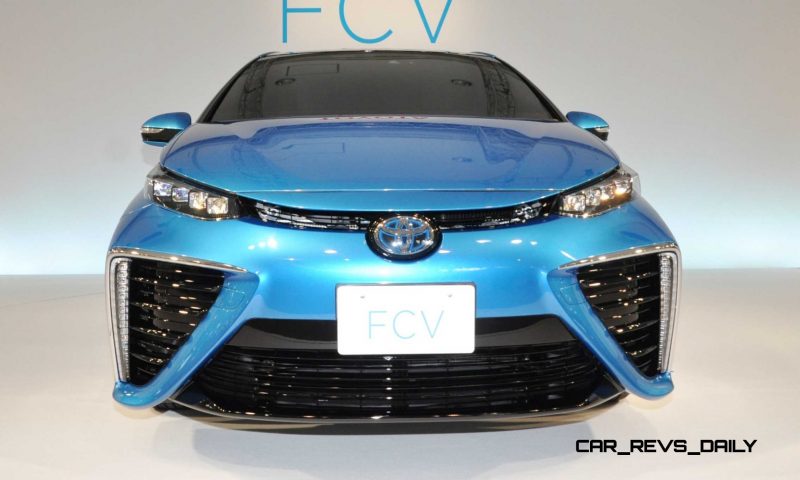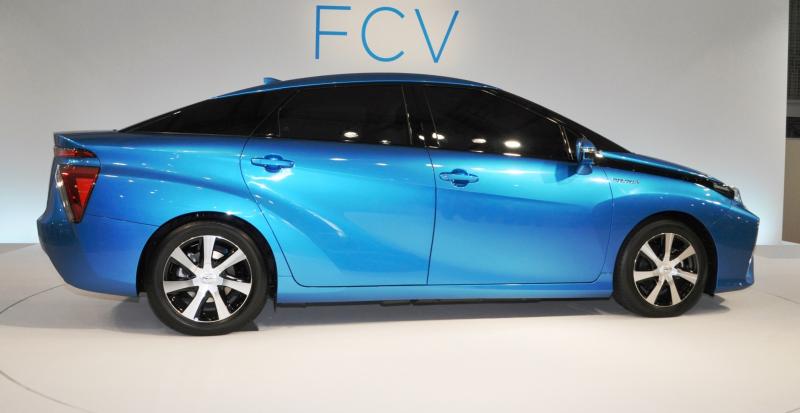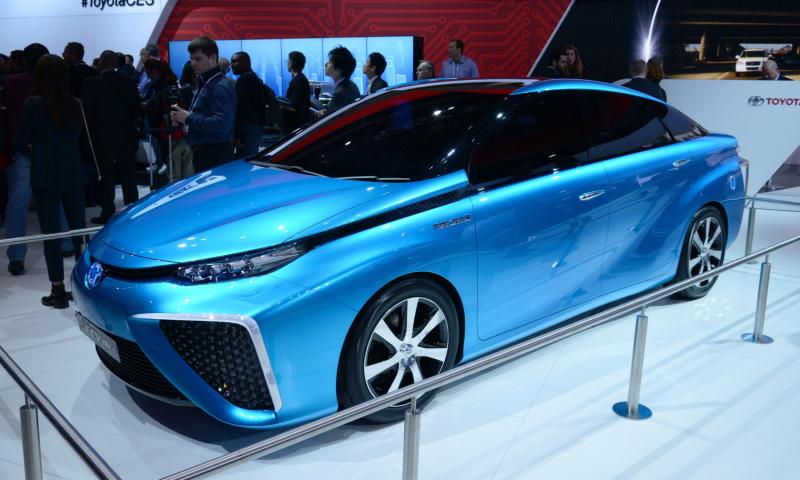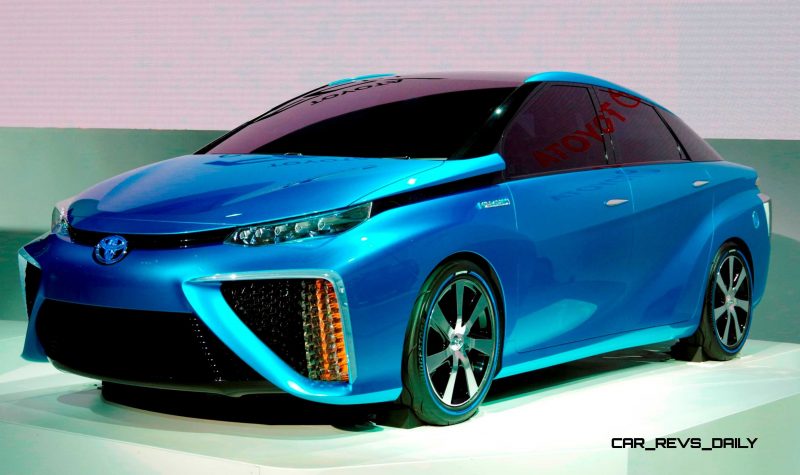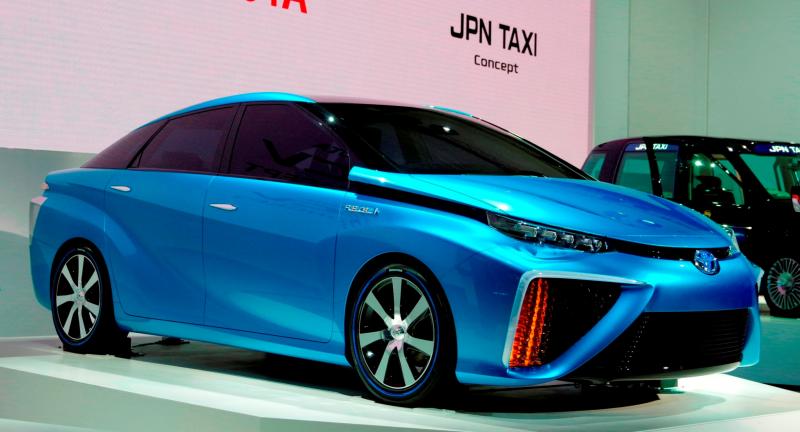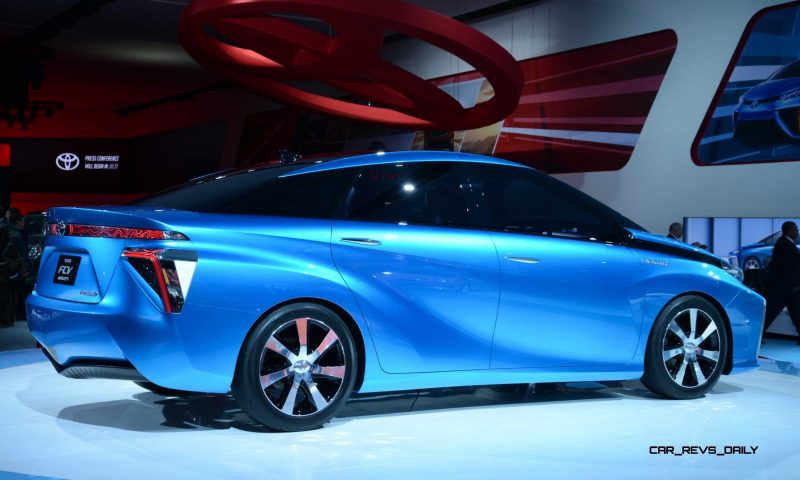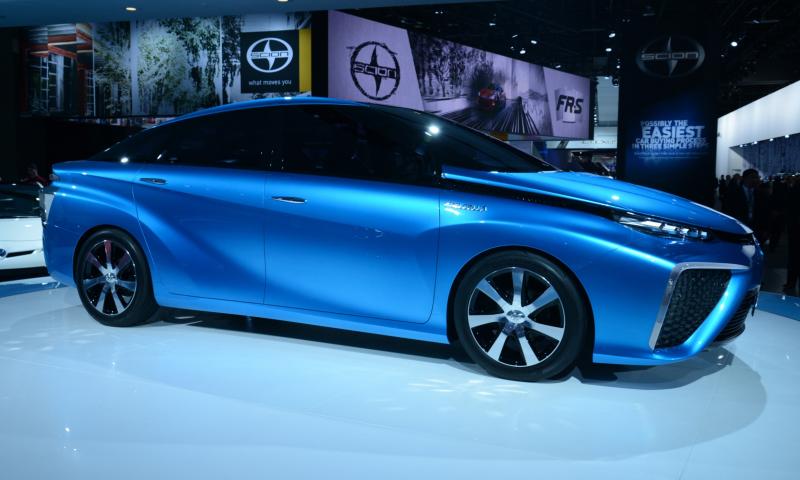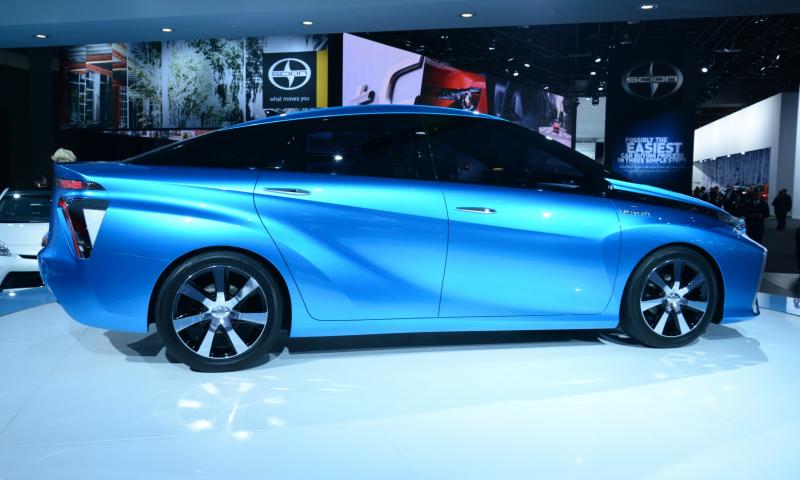 Updated 11.17.14
Updated 11.17.14
Second update today: Toyota just announced that the Mirai will indeed be on sale in the US in Fall 2015 — but only in California initially. Further markets will be added when there is hydrogen recharging infrastructure in place.
The other major update is the first look at the interior of the Mirai – as shown below.
PREVIOUS
Toyota just revealed the official name of its upcoming fuel-cell vehicle: the Mirai. Mirai is pronounced “mi-rye” and means Future in Japanese, as explained by CEO Akio Toyoda in the announcement below.
We are very eager for this car’s launch in dealers and consumer hands, with a large-scale roll-out set for October 2015 in the US. Check out the below announcement plus the previous article for a look at the Mirai in never-before-seen lipstick red!
The Future Has Arrived, and It’s Called Mirai
President Akio Toyoda announces name of fuel cell sedan in web video
CEO Jim Lentz announces expansion of Toyota fuel cell infrastructure investment to five-state Northeastern corridor
November 17, 2014
NEWPORT BEACH, Calif., (Nov. 17, 2014) – Akio Toyoda has seen the future, and it’s called “Mirai.” That’s the name of Toyota’s new fuel cell vehicle, which the company’s president announced in a video released the night before the car’s official launch.
Mirai, which means “future” in Japanese, represents a turning point for the automotive industry. The groundbreaking vehicle can travel up to 300 miles on a single tank of hydrogen, refuel in less than five minutes and emits only water vapor.
Expanded Support for New Hydrogen Stations
Of course, the car of the future won’t become a reality without the hydrogen stations to support it. That’s why Toyota North America chief executive officer (CEO) Jim Lentz announced a new commitment to drive the development of a hydrogen refueling infrastructure in five northeastern U.S. states.
To support Mirai’s introduction to the region in 2016, Toyota is collaborating with Air Liquide to develop and supply a phased network of 12 state-of-the-art hydrogen stations targeted for New York, New Jersey, Massachusetts, Connecticut, and Rhode Island. The states and locations have been strategically selected in the greater New York and Boston areas to provide the backbone of a hydrogen highway for the Northeast corridor. Specific details of the collaboration will be revealed in the coming months.
“Toyota’s vision of a hydrogen society is not just about building a great car, but ensuring accessible, reliable and convenient refueling for our customers,” said Jim Lentz. “I am happy to announce that this vision will expand beyond the borders of California and give customers the opportunity to join the fuel cell movement.”
This new announcement builds on Toyota’s previous support for hydrogen infrastructure development in California. In May 2014, Toyota announced a $7.3 million loan to FirstElement Fuels to support the operations and maintenance of 19 hydrogen fueling stations across the state. The commitment augments funding provided by the California Energy Commission, and makes Toyota the only OEM to provide working capital for infrastructure development.
TRANSCRIPT OF AKIO TOYODA’S ANNOUNCEMENT VIDEO
Today, we are at a turning point in automotive history.
A turning point where people will embrace a new, environmentally-friendly car that is a pleasure to drive.
A turning point where a four-door sedan can travel 300 miles on a single tank of hydrogen, can be refueled in under five minutes and emit only water vapor.
A turning point that represents many years and countless hours of work by our team to create a car that redefines the industry.
All of us at Toyota believe in a future that will be safer, greener and easier for everyone.
We imagined a world filled with vehicles that would diminish our dependence on oil and reduce harm to the environment.
It was a bold, but inspiring goal. And, today it is a reality.
Our fuel cell vehicle runs on hydrogen that can be made from virtually anything, even garbage!
It has a fuel cell that creates enough electricity to power a house for about a week.
This is a car that lets you have it all with no compromises.
As a test driver, I knew this new fuel cell vehicle had to be truly fun to drive – and believe me, it is. It has a low center of gravity, which gives it very dynamic handling.
After surviving millions of miles on the test track and 10 years of testing on public roads in freezing cold and scorching heat…
After passing extensive crash tests…
And after working with local governments and researchers around the world to help make sure it is easy and convenient to refuel…
We are ready to deliver.
The name we’ve given to our new car is Mirai, which in Japanese means “future.”
We believe that behind the wheel of the Mirai, we can go places we have never been, to a world that is better, in a car that is better.
For us, this isn’t just another car. This is an opportunity – an opportunity to really make a difference. And making a difference is what Toyota is all about.
The future has arrived. And it’s called Mirai.
2016 Toyota Mirai
PREVIOUS
Are those typos in the headline? No, just some attempted cleverness. The FCV is an EV and H20 event horizon.
VAPORWARE?
Fuel cells helped define the term vaporware.
Vaporware is now a ubiquitous silicon valley description of long-term possibilities that are always on the distant horizon.
Part of the reason fuel cell Hydrogen vehicles have earned and propelled this bit of jargon is that their main byproduct is water vapor by converting hydrogen into electricity for a battery pack.
The other reason is that companies have been researching this technology for more and 30 years, with no production models to speak of so far.
The FCV looks set to change that by actually coming to US market in decent numbers by late 2015. Toyota has promised the car on sale in Japan by April 2015 – and is known for meeting deadlines. And also for taking years of losses in order to be out front on new EV tech. Look at the Prius. Its name itself means ‘Before US’ — or Before US carmakers, some have suggested.
LETS TALK NUMBERS
FCV’s max speed is 105-mph, with a practical range of 300-miles from a tank of hydrogen. Hydrogen fueling takes less than 90 seconds and a full tank should cost no more than $10 for retail consumers.
Overall vehicle efficiency is said to be 65-percent, more than double a Prius PHEV.
WHY TOYOTA MIGHT MAKE BANK ON FUEL CELLS
Make bank eventually while taking a loss at first. That’s the plan.
Aren’t Prius and its hybrid solution enough? Yes and no.
SuperPrius FCV will be a vanguard technology if Toyota has found a way to mass-produce the power unit. As popular as the Prius is with shoppers, for its first 15 years it also made Toyota a boatload of money via licensing the tech around to other companies. Ford, GM, Nissan and others have all purchased and licensed hybrid tech from Toyota at rich prices – only recently developing their own in-house solutions. Cars like the Tahoe Hybrid, Fusion Hybrid and Altima Hybrid? All Toyota battery, electric motor/transmission and power control units.
In terms of pricing for this long-rumored Super Prius? The Prius Plug-in retails for below $40,000 in its most-loaded guise. It is also the perfect platform-mate for an FCV via its large battery compartments and light and slippery exterior shape.
HOW MUCH ARE WE TALKING?
We would ballpark a price in the $60,000 range for the upcoming FCV, but this is totally speculative. Toyota will take a loss of more than $250,000 for every one sold at that price for the first five years or so. This tech is that revolutionary.
But the insights and clarity from the hyper-optimized FCV will also feed back into the fourth-generation Prius — which will arrive around or shortly after this new FCV hits the market.
We are even warming up to its design a little more than when first shown. The concept is a bit freakier than the production model, which tones down the LEDs up front a bit. Who knew – there can be too much of a good thing with LEDs.
FCV Concept
FCV Production Car
MAKES VOLT AND TESLA YESTERTECH
In terms of leap-frogging the Tesla’s of the world, the FCV has great potential to really change the hybrid game. It cuts much of the charging annoyance and constant plugging out of the equation.
And out the tailpipe? The cliche says…. fuel cells make nothing but water so pure you can fill up a glass right from the tailpipe.
FCV might actually stand for event horizon in tech terms.
2016 Toyota FCV
2014 Toyota FCV Concept

Tom Burkart is the founder and managing editor of Car-Revs-Daily.com, an innovative and rapidly-expanding automotive news magazine.
He holds a Journalism JBA degree from the University of Wisconsin – Madison. Tom currently resides in Charleston, South Carolina with his two amazing dogs, Drake and Tank.
Mr. Burkart is available for all questions and concerns by email Tom(at)car-revs-daily.com.

